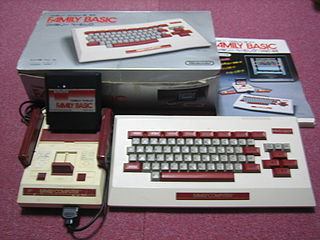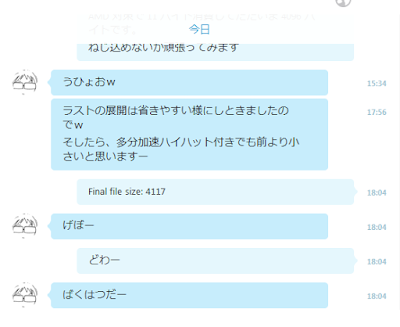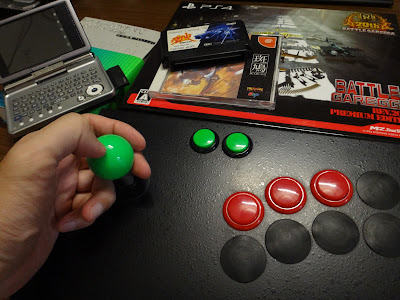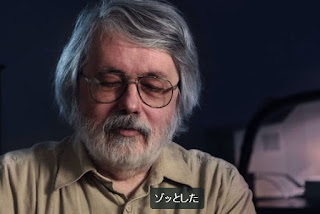Welcome to the Interview with Demosceners. This time, we welcome 0x4015 who won 4K compo at Revision this spring. This created a buzz among Japanese people in the community, because this was the first time that Japanese demoscener had won at Revision, the largest demoscene party held on this planet.
I might have mentioned before but demoscene didn’t flourish in Japan even in mid-90s, the time defined as golden era of demoscene. There are many reasons for it (I’m not the right person to explain about this, ask someone else) but basically Japanese computing platforms were different from the ones which drove demoscene forward (such as Commodre64 and Amiga). And just like at the train station, we wouldn’t barely know what’s going on at the different platforms, mostly we just care what’s coming to our platform.
Having said that, Japan is known as the land of Fujiyama, Geisha, Sushi, Nintendo, and Technology. Sir James Dyson said, “it’s a place where people appreciate design and technology*” It’s a lovely thing to hear and I also agree but therefore I’ve always wondered: Demoscene is a place where tech meets art.. then why wasn’t there demoscene or equivalent of demoscene in Japan in 90s?
In this interview, 0x4015 answered to this question. He introduces us what was happening in Japanese computer fans community in 90s. And of course he reveals how he made his 4K demos, too (check his machine!). You’ll also learn how to read his name and where it comes from. Enjoy! 🙂
(note: If you don’t know what demoscene is, maybe you want to start from here)
First of all, could you please introduce yourself?
I’m a man who’s behind the group called 0x4015. I’m a typical Japanese otaku. I don’t even know how to read my name, but someone at the Revision said “zero x forty fifteen” and I thought “that’s how it’s read!”
Oh really? I was also wondering how to read your name! 🙂 You just mentioned that you were at Revision (note: The largest demoparty held in Germany during Easter season) this spring. How was it? Have you been to overseas demoparties before?
That was my first time visiting a demoparty held abroad. It was absolutely great party, and there were a lot of great people.
Did you find any difference between Japanese demoparty (Tokyo Demo Fest) and Revision?
The difference between those 2 parties…well… Revision was louder! Their venue was perfect but I couldn’t keep up with it because of a jetlag. I messed up many things.
Nevertheless you won 4K compo! Congratulations! I heard it was intense compo. How was it like for you? Did you enjoy it?
Compos were all fun. 4K intro, a category I submitted my work to, was full of works created by my favorite demo groups. I never imagined that I would compete against them.
I was aware that there were so many things to reconsider and to be improved on “final stage”. And all the other entries were really high level, so I thought it’s just impossible to beat them. I felt that the world is bigger place than I’d imagined. But the compo made me realize what is lacking with my work, and for that lesson alone I thought it was worth coming.
So when I heard that my demo got first prize, I was just surprised.
final stage by 0x4015 (2017)
Hmm.. I can imagine.. You said you suffered from jetlag and couldn’t keep up, but is there anything that you wanted to do there but you couldn’t?
I wish I could have communicate more with the people there and shared about how things are/were like in Japan. I just couldn’t because I’m not good at English.
“final stage” seems like a sequel to “optical circuit” and “2nd stage boss”. Did you plan to make a trilogy from the beginning? Or it’s not a trilogy and this series will continue?
I didn’t plan to do the trilogy. I used fighter planes for “optical circuit” but I couldn’t make them do anything because of the 4KB limitation. So I’d been thinking that I should provide better scene for them. Thus it continued to “2nd stage boss” and “final stage”. Oh, and it is trilogy. “final stage” is the last one of this series.
Optical Circuit – 0x4015 (2015)
I remember the time when your first and second works were released at Tokyo Demo Fest. Audience were really excited and the venue was filled with cheer and claps… Why did you choose Revision to release your third work?
“2nd stage boss” was nominated for Meteoriks award* and I thought I should be there just in case I won. So I decided to go to Revision.
And if I’m going to go there, I thought I should bring something. So I brought 4k intro. You know, Revision was the “final stage” for me.
*note: The Meteoriks is a set of awards to honor the excellence in demoscene production. Nominees are selected from all the demos released in previous year. Category varies from Best direction, Best Graphics, New Talent etc (since it’s newly established quite a many things are not fixed yet). It’s been presented at Revision annually.
2nd stage BOSS by 0x4015 & YET11 (2016)
Oh yes, I almost forget! The second one “2nd stage boss” won Meteoriks award for Best Direction and Best High-End 4K Intro. It was also nominated for Public Choice. That’s remarkable! It sounds like you walked on red-carpeted runway to the final battle stage 🙂
Ok, now let’s go back to the beginning. How did you discover demo and demoscene?
The first time I saw a so-called “demo” was around 1994. It was DOS demo. My acquaintance showed me things like “Crystal Dream 2” (video) and “Second Reality” (video). And I stunned of course. I asked him to record that on VHS and I watched it again and again.
However I didn’t go to demoparty until Tokyo Demo Fest 2012. And I learnt the history of demoscene, from cractros to currents ones, via “Moleman2 – Demoscene – The Art of the Algorithms” (2012) so it’s actually quite recent that I got to experience real demoscene. Thanks for the Japanese subtitle by the way.
Oh, I’m glad to hear that 🙂 “Crystal Dream 2” and “Second Reality” were both released in 1993, and you watched them in 1994. It’s almost real-time! It’s great that you discovered demoscene when it’s at its peak.
Well, it’s bit complicated and I can’t say yes or no to this. Because even though demos like these didn’t exist in Japan back then, I’d experienced something similar to it before seeing those demos.
Similar things? What is that?
Let me explain. Back then (around 1994), I was a X68000 user. X68000 is a Japanese personal computer which is known to be very similar to Amiga. Actually, in terms of hardware, its CPU was the only thing which resembles Amiga, but both Amiga and X68000 were largely utilized for leisure activities.
I only know things around X86000 but as far as I know there was no “demoparty” in Japan. However there were many events and competitions which had same purpose.
Back then, non-realtime 3D was rather active in Japan. And there was an annual competition called “DoGA CGA Contest” for self-produced CG animation. They used huge venue which can accommodate around 2000 people, so I assume it was quite big event. Most of the entries were created with their own rendering engine for X68000. Makoto Shinkai, who’s famous for his movie “Your Name” presented his debut work (video) at this event and won first prize.
There was also an event called “Geijutsusai (Art Festival)” organized by SHARP, a manufacturer of X68000. This event held a competition for all kinds of production, from tech demo to games. And this video was the opening movie for the event (note: Offline rendering movie), created with a user’s own rendering engine for X68000.
Research of realtime 3D was active as well. Unlike Amiga, X68000 didn’t allow us to use DMA for polygon drawing so we had to do everything with CPU. There was a heated discussion for rendering cost, we argued about how much cycle could we reduce per pixel. And computer magazine featured serial article about realtime 3D on X68000. I think the title of this article was “Hardcore 3D Ecstasy”. Writers of this article later started up “Gran Turismo Series” for PlayStation.
Speaking of realtime 3D, we sometimes found a demo included in a game software for X68000. And game makers were competing each other with its quality.
Geograph Seal (note: Realtime rendering movie)
Zoom’s demo (note: Realtime rendering movie)
I’m not sure if they were inspired by demoscene, but I guess they were doing the same thing.
I should also mention Comic Market (Comiket). It’s the world’s largest self-published manga exhibition & sale fair, and about half a million people (back then, quarter-million) visit there. This is a time-lapse video of the queue for the Comiket entrance. It gets demo-ish after 40 seconds and I find it interesting.
Not just manga, this event covers various categories including “computer”. During before-internet age, fans of computer used this event to present their works. Just like party coding, they worked through the night to meet the deadline. I remember they actively distributed music disks and very few of them sold their own megademo in floppy disks. (I know it may sound strange but people sell and buy demo here because it’s sale fair.) By the way, “Bad Apple” which has been featured a lot in demoscene works came from this event. The video was made with the character which was presented in this comiket. Well, I can keep going how it was back then but I guess I better stop now.
Wow, that is interesting! I didn’t know about these things… so almost-demoscene culture did exist in Japan!
I know the situation was quite different from overseas “demoscene” but I still had good amount of occasions to be inspired and to present what I made with that inspiration.
So, to finally answer your question, I first discovered demo/(quasi) demoscene via tech demo on X68000, then peeked the demoscene via DOS demo like “Crystal Dream 2” and “Second Reality” and experienced actual demoparty at Tokyo Demo Fest 2012.
Thank you. So whatever the format is, you’ve been in a long relationship with this scene… Ok, now let me ask you about your demos. Aside from “2nd stage boss” you took care of all the roles for demos (code, graphics, music…). I’d like to know how your creation process were like. Did you prepare sketches or process sheets before working on the project?
I’ve never prepared sketches or process sheets for my demos. I just pick up one element which will be a core of the demo, and I think about what is needed to show that element effectively. Like putting flesh on the bone. I’ve been making 4K intros and this work method worked fine for me.
However the time I made “2nd stage boss” was somewhat different from others and the most memorable. So I’ll share this for a bit.
I asked YET11 to create sounds for “2nd stage boss”. Well it wasn’t actually “asking” but more like “forcing”. YET11 is very well-known creator in the world of Eroge. He had never used shading language before, but after 2 months, he successfully made his own software synthesizer with Computer Shader.
This synth combines the benefits of byte-beat and float-beat, and the song data was semi-auto-generated to reduce the size. When it’s compressed, the code size was only 861 bytes. But since it’s semi-auto-generated it’s extremely difficult to control and there’s no guarantee that we will get the song we wanted. We needed to follow the generated music rather than trying to change it. YET11 was having such a tough time, but in the end he provided me a great sound.
At first his sound was much stronger than my visuals, so I quickly built up the visuals to match up. But the sound was continuously refined as YET11 was gaining experience and knowledge, and it became like a battle between sound and visuals. Then we exceeded the limitation and became panicky.
I minified the file and managed to squeeze everything into 4KB. And just when I thought it’s finally done, he updated the sound again saying “It’s not me but my hands… my hands just moved and did it!” And this updated version included effect sounds. I knew that he’s a man who never make a compromise but this was too big. I thought this never fit in 4KB but I had no choice but to try hard because I’ve never seen 4KB intro with sound effect.
Eventually YET11’s sound worked as a coordinator for my dispersed visual effects. If you allow me to express this in Japanese way, it worked like a skewer for Dango. This demo was directed by his sound.
Wow, it sounds like an ideal form of collaboration! By the way, all the demos you released are 4K demo. Is there any reason for this?
I can’t spare much time to code for fun. But if it’s for 4K intro, I can easily reach the size limitation and the work is done. So actually it’s a convenient restriction for me.
Even if I try my best and hardest, I’m fully aware that I can’t compete in no size limitation category. Because I can’t make something proper, or I probably try too hard and can’t finish up.
OK… well, could you show us where your demo is born?
I’ll explain each item in this photo:
– Games
PS4 game “Battle Garegga”, Nintendo game “Recca”, Dreamcast game “Ikaruga”. All of these are “must” shooter games for hardcore gamers.
– Homemade Joystick
I made this to play shooter games. Store-bought ones are not good enough for me.
– Book “All About Chiptune”
It’s a book about chiptunes, but it also covers demoscene. And I think this is the most detailed book on demoscene published in Japan. It’s my bible.
– ZAURUS
I’m using this to code 4K intro in a commuter train. With this machine, I can code even if the train is fully packed.
Wow, so that demo was made with Zaurus…! It’s so small that it looks exactly like my dictionary 🙂 Then, what program do you use to make demo? Do you create your own tool?
To compress executable files, I use crinkler. Crinkler is a wonderful tool, and the reason I can say “4K is handy category” is because of this tool.
I don’t use any demotools. I made my demos with legacy text editor. I hard-code everything, and I never reuse them. Even if I want to use similar effects, I code from scratch.
Do you set your own rule when you make demos? Is there anything you particularly care about in the process?
Like I just mentioned, “hard-code everything from scratch” is my rule and motivation for making demos.
Programming style can be broadly divided into 2 types. One is to avoid hardcoding and do thing steadily while improving reusability. Another is to fearlessly dive into hardcoding and write disposable code like you scribble down. Which of these is better is common topic of debate in programming. I think it’s probably the best if you can switch between 2 styles depending on the situation.
I’m more of the former, so it’s important for me to make something with the opposite style sometimes. When I make demo, I decided to fully switch to hardcoding style.
I don’t program but this idea of “changing the style of programming” is always inspiring to me 🙂 Speaking of programming, you make games as well and presented them on your website. And I know you brought your Family Basic to Tokyo Demo Fest. And I just wonder, is there anything common between making games and making demos?
I only play and make Shoot ’em up games, so even when I make demos it ended up shooter games. But this is not a commonality but more like the foundation of me.
Now come to think of it, RAM of Family Basic was 4KB. Whether it’s for demo or games, I probably can be more serious if there’s limitation.
 |
Family Basic (from Wikipedia) |
Just to explain what Family Basic is, this is a tool for NES and Nintendo released only in Japan. With this tool, user can make games with BASIC. I spent my teenage years with this. The cartridge of Family Basic has the same battery backup RAM which was used to save data in “Dragon Quest III” and this is where we write codes in. And it’s seriously tight.
I implemented my own 1.5KB assembler into this 4KB area and created my own development environment which directly converts BASIC’s intermediate code to native code. Looking back, I can’t help thinking that I should have used my precious power of concentration for something more constructive.
If I could go back 30 years and tell myself that I still write codes with 4KB limitation, I wonder how he reacts. Maybe he too would tell me to spend time more constructively.
Haha, maybe you can also tell him that he’s going to German demoparty in the future 🙂 By the way, I’m a Nintendo generation, but I only got to know the existence of Family Basic at Tokyo Demo Fest.
Just to tell you more about Family Basic, there was a computer programming magazine which featured programs for Family Basic. And each of their code always started with this line:
POKE &H4015,15
This just set 4 bits in sound enable register mapped to the address 0x4015 to “1”, but I wasn’t able to understand this when I first saw it.
To understand this line, you need to know about hex number, relationship between binary number and bit, memory-mapped I/O, NES’s sound specification, etc., so it’s quite difficult. On that magazine cover there’s a headline saying “We’re giving you easy way to understand, get things moving and program!” but I couldn’t understand from the very first line. 0x4015 was the first magic number I run into.
Ah, that’s your name! So that’s where it comes from 🙂 You mentioned that you used Family Basic in your teenage years, but what brought you to the world of programming?
From the time I was little (around 7 years old and it was around 1980) I’ve seen so many arcade games at the nearby candy store/game arcade and I’ve played all kinds of games. As I played I gradually got interested in how the system works, and started to have a dream of becoming a game creator in the future.
I was 14 when I first used the computer. I couldn’t afford expensive computers, so for starters I borrowed Family Basic from my friend. At first I really didn’t enjoy it, but as I got to know assembler and try things that I’d learnt through years of playing games, I was more and more into this machine.
I tried other machines like MSX, but I felt Family Basic was more suitable for me. So I ended up using it for nearly 6 years.
I know 6 years is way too long, but the most important thing for me was to show a sprite properly. Before X68000 came out, Family Basic was the only home computer which allowed me to do it.
Well, there must be some kind of chemistry between you and Family Basic 🙂 Ok, allow me to ask you this classic question. Your favorite demo, memorable demo, demo that changed your life… tell us a demo which is special to you.
I like all the classic ones, and it will be endless if I list up everything I like… so I’ll pick up only 3 of them.
9 Fingers by Spaceballs (1993) (Video)
A lot of X68000 users considered Amiga as their rival, so we were all shocked when we saw this demo. Back then, we discussed if we could make this demo with X68000 and thought over what is needed to make it happen. And here were the things we came up:
First of all, we definitely needed sophisticated DMA architecture. X68000’s DMA wasn’t designed for graphics. Second, we needed frequency tunable PCM audio device which supports multichannel output. X68000’s audio device supported only one channel for fixed frequency ADPCM. And third, we needed girlfriends who we could work together to make demos. But for this, we regrettably realized that we lacked many things.
fr-013: flybye by farbrausch (2001) (Video)
This invitation demo for The Party 2001 was released while I was still excited about “fr-08: .the .product”. When I watched this demo, I thought “I don’t know what this is about but I should go to this thing called demoparty!” But when I looked into it, I found that the cost of the trip was quite expensive and I couldn’t take a vacation around that time. So I gave up. Then while I was just thinking like “well, probably I can go someday” The Party was cancelled. I’m still not feeling good about this. I feel melancholy when I watch invitation demos which I couldn’t go.
It’s been 16 years since this demo was released. And while I was wondering whether I should go to Revision 2017 or not, this demo brought me back how I felt. So I decided “this time, I just go”
Tenshoku Kishi Ganglion (The Job changing knight Ganglion) by tomohiro (2015) (Video)
When this demo was released at Tokyo Demo Fest, everyone at the venue was laughing so hard that our belly hurt. My daughter (4 years old at that time) really liked this and asked me to play every day. She called this demo “funny chick” and draw some pictures of this. It was lovely to see, but she somehow started to draw this during playtime at her kindergarten too… and as I imagined my wife blamed me for this.
Thank you, I think your selection covers a wide range of era and contents! Great! 🙂 And here’s another big question: What does demo and demoscene means to you?
Probably demos reflect my underlying admiration for Amiga. There were very few people in Japan who owned Amiga back then, and we didn’t have any information about it so we couldn’t experience the powerfulness of Amiga in real time. At that time hardware specs is fixed, like everyone’s using Amiga, so I can imagine that the competition must have been fierce. And I wish I could have joined in there.
No matter how I try, I can’t go back in time and experience that situation. I know that, but I think I’m still trying to get closer to it. And I guess that’s one of the reasons why I make demos.
I’m sure there are many demo fans in Japan feel the same as me. To us, a demo means Amiga’s “mega demo”. Originally the term “mega demo” signified a demo which fits in one floppy disk, but a lot of Japanese use this term intentionally regardless of its size. I also call 4K intro as “4KB mega demo”. When we say “mega demo”, it shows our admiration for Amiga’s demo culture.
That’s interesting… I think I just learnt the hidden meaning of those “Amiga call” I heard at Tokyo Demo Fest. I wonder what happened if Amiga was common in Japan back then, but well, let’s shift our focus to the future. Is there any dream or goal you want to achieve in the scene?
I’d like to create a demo which is completely different from the ones that I made. I also want to challenge other categories than 4K intro.
And one more thing. It’s very important. I have to bring an end to the battle of Amiga vs X68000.
And, finally your message for demosceners and demo fans out there please!
X68000000000000000000000000000000000!!!!!
(Say it like Amigaaaaaa!!!!)
——————————————————————–
Thank you very much for answering my questions 0x4015 san!
If you want to see 0x4015’s work, check Pouet page. Not just watching on Youtube, you can download the exe file and check it’s really 4KB. On his website, you can find his games and articles around Family Basic and game programming and so on (in Japanese).
[UPDATE: 2021/02/05] 0x4015 (aka Yosshin) wrote up about how Japanese demoscene-like culture was in the 90s on his blog. (Japanese)
And one more thing. For someone who’s planning to visit Tokyo Demo Fest, I’ll give you a little tip 🙂 TDF is usually held in February, which is low season and flight ticket may be fairly reasonable but it’s one of the tough months to book hotel rooms in Tokyo because of the university exam season (high school students come to Tokyo and stay to take exams). And the hotel room from reasonable to standard price will be hard to come by if it’s last minutes. So consider planning ahead…
Thank you very much for reading this till the end! 🙂
In case you’re wondering what “demo” or “demoscene” is, better check out the well-made documentary called Moleman2. (and the director, M. Szilárd Matusik’s interview can be read in here.)
#1: Interview with Demoscener: q from nonoil/gorakubu is here.
#2: Interview with Demoscener: Gargaj from Conspiracy, Ümlaüt Design is here.
#3: Interview with Demoscener: Preacher from Brainstorm, Traction is here.
#4: Interview with Demoscener: Zavie from Ctrl-Alt-Test is here.
#5: Interview with Demoscener: Smash from Fairlight is here.
#6: Interview with Demoscener: Gloom from Excess, Dead Roman is here.
#7: Interview with Demoscener: kioku from System K is here.
#8: Interview with Demoscener: kb from Farbrausch is here.
#9: Interview with Demoscener: iq from RGBA is here.
#10: Interview with Demoscener: Navis from Andromeda Software Development is here.
#11: Interview with Demoscener: Pixtur from Still, LKCC is here.
#12: Interview with Demoscener: Cryptic from Approximate is here.
For some of my posts related to “demo and “demoscene” culture is here.






